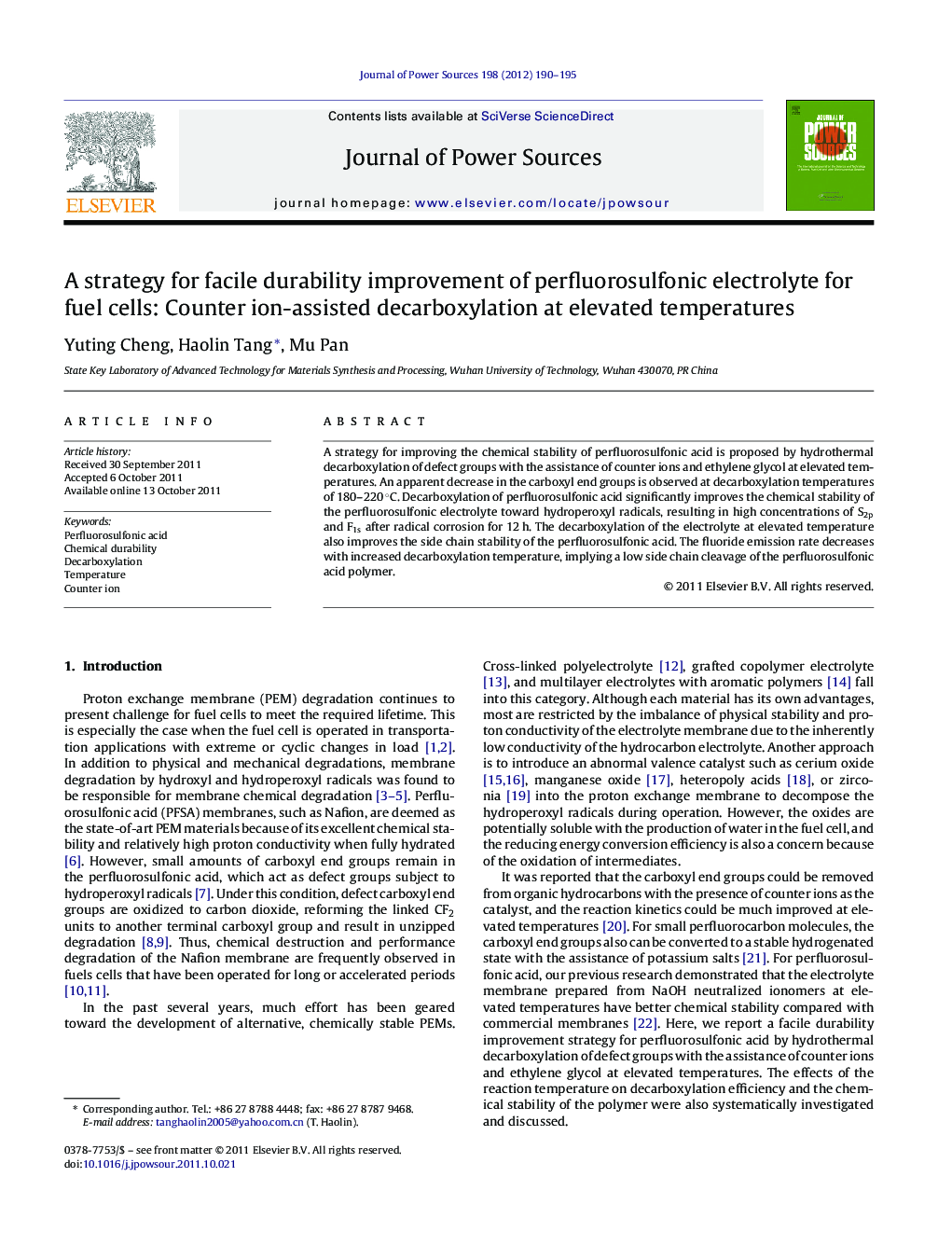| Article ID | Journal | Published Year | Pages | File Type |
|---|---|---|---|---|
| 1288410 | Journal of Power Sources | 2012 | 6 Pages |
A strategy for improving the chemical stability of perfluorosulfonic acid is proposed by hydrothermal decarboxylation of defect groups with the assistance of counter ions and ethylene glycol at elevated temperatures. An apparent decrease in the carboxyl end groups is observed at decarboxylation temperatures of 180–220 °C. Decarboxylation of perfluorosulfonic acid significantly improves the chemical stability of the perfluorosulfonic electrolyte toward hydroperoxyl radicals, resulting in high concentrations of S2p and F1s after radical corrosion for 12 h. The decarboxylation of the electrolyte at elevated temperature also improves the side chain stability of the perfluorosulfonic acid. The fluoride emission rate decreases with increased decarboxylation temperature, implying a low side chain cleavage of the perfluorosulfonic acid polymer.
Graphical abstractThis research developed a simple strategy for improving the chemical stability of perfluorosulfonic acid by hydrothermal decarboxylation of the defect groups with the assist of counter ion and ethylene glycol at elevated temperature.Figure optionsDownload full-size imageDownload as PowerPoint slideHighlights► Facile strategy for chemical stability improvement. ► Counter ion assisted decarboxylation. ► Highly radical tolerance.
